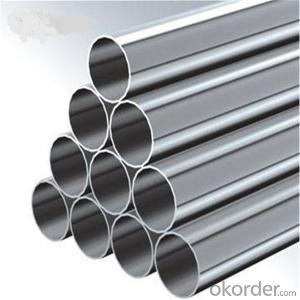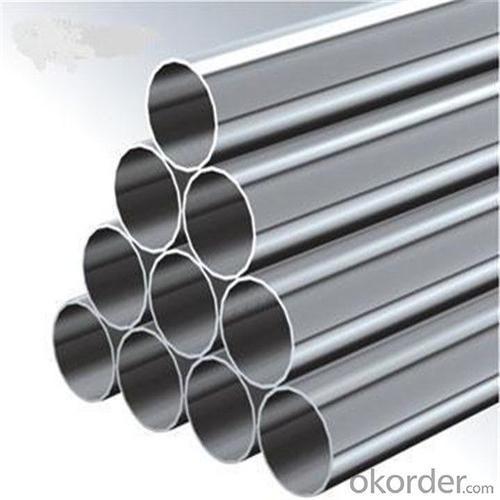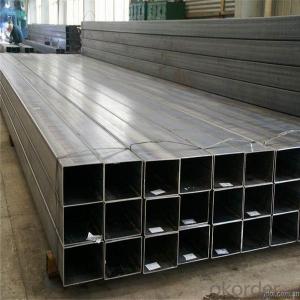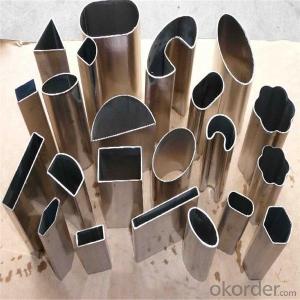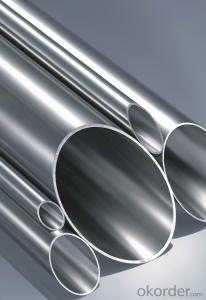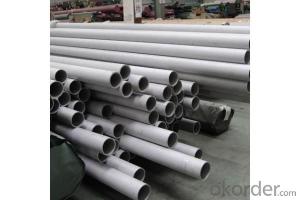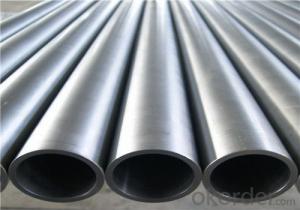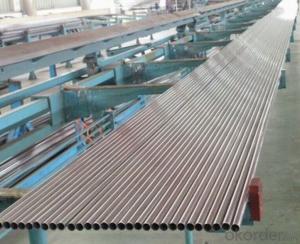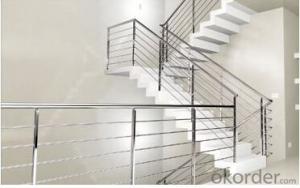TIG Welded 304 Stainless Steel Rectangular Tube/Pipe
- Loading Port:
- Shanghai
- Payment Terms:
- TT OR LC
- Min Order Qty:
- 5 m.t.
- Supply Capability:
- 25000 m.t./month
OKorder Service Pledge
OKorder Financial Service
You Might Also Like
Specification
eatures | 1.We are the coil agent in Foshan,offer coils to many other factories as the pipe material. |
2.We have more than 15 years experience in stainless steel market,a professional manufacturer. | |
3.We completely produce the pipes,from the material picking,rolling,striping,pipe making,polishing,and package all these procession. | |
Brand | ZaiHui |
Certification | ISO 9001:2008 |
ISO 14001:2004 | |
Standard | ASTM,AISI,JIS,DIN,EN,SUS,GB |
Type | Welded,TIG Welded |
Steel Grade | 201,202,301,304,316,430,304L,316L |
Surface Treatment | 180grit,240grit,320grit,400grit,500grit,600grit,HL,2B,Satin,Mirror.light,shiny,bright,brushed,mat |
Round pipe | |
Outer Diameter | 9.5,12.7,15.9,17,18,19.1,20,21,22,23,25.4,28,31.8,33,35,36,38.1,40,41.8,42,45,48,50,50.8,56,57,60,63.5,76.2,80,89,101.6,108,114,127, |
Thickness | 0.25mm to 3.0mm |
Length | 3000mm to 8000mm |
Square pipe | |
Side Length | 10*10,12*12,15*15,18*18,19*19,20*20,22*22,23*11,24*12,24*24,25*25,28*28,30*30,23*36,36*36,38*38,40*40,48*23,48*48,50*50, |
Thickness | 0.25mm to 3.0mm |
Length | 3000mm to 8000mm |
Tolerance | Thickness:+/-0.02mm; |
Length:+/-5mm | |
Quatity:+/-5% | |
Character | Rustproof, good corrosion resistance, anti-wearing, good-appearance, excellent mechanical properties. |
Application | Window,Door,Handrail,Curtain rail,Towel rail,Flagpole,Lamp pole,Sanitary Instrument,Billboard,Decoration,Upholstery, |
| Gade Chemical Composition | 201 | 202 | 301 | 304 | 316 | 430 | 304L | 316L |
| C | ≤0.08 | ≤0.06 | ≤0.06 | ≤0.06 | ≤0.08 | ≤0.12 | ≤0.03 | ≤0.03 |
| S | ≤0.02 | ≤0.02 | ≤0.03 | ≤0.03 | ≤0.03 | ≤0.03 | ≤0.03 | ≤0.03 |
| P | ≤0.075 | ≤0.06 | ≤0.045 | ≤0.035 | ≤0.045 | ≤0.04 | ≤0.045 | ≤0.045 |
| Mn | 8.5-10.5 | 7.5-10 | ≤2.0 | ≤2.0 | ≤2.0 | ≤1.0 | ≤2.0 | ≤2.0 |
| Si | ≤1.0 | ≤1.0 | ≤1.0 | ≤1.0 | ≤1.0 | ≤1.0 | ≤0.75 | ≤0.75 |
| Cr | 14-15 | 14-16 | 16-18 | 17-20 | 16-18 | 16-18 | 17-20 | 16-18 |
| Ni | 0.8-1.2 | 4-6 | 4-7 | 8-12 | 12-16 | ≤0.05 | 8-12 | 12-16 |
| Gade Physical Property | 201 | 202 | 301 | 304 | 316 | 430 | 304L | 316L |
| Density | 7.9 | 7.9 | 8 | 8 | 8 | 7.8 | 8 | 8 |
| The Conductivity | 16.3 | 16.3 | 16.3 | 16.3 | 14.2 | 26 | 16.3 | 16.3 |
| Specific Heat(0-100Cp) | 0.5 | 0.5 | 0.5 | 0.5 | 0.5 | 46 | 0.5 | 0.5 |
| Abrasion Resistance | Good | Good | Good | Good | Good | Good | Good | Good |
| Cold Forming | Fair | Good | Good | Good | Good | Good | Good | Good |
| Weldability | Good | Good | Excel | Excel | Excel | Fair | Excel | Excel |
| Melting Point | 1400-1420 | 1400-1420 | 1400-1420 | 1400-1450 | 1370-1400 | 1430-1510 | 1400-1450 | 1370-1400 |
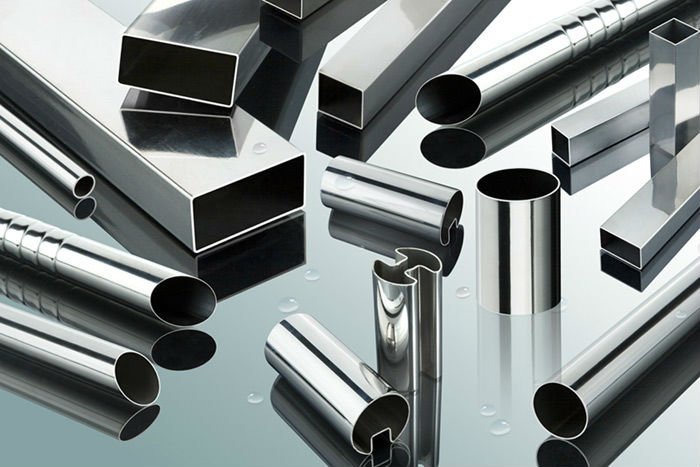
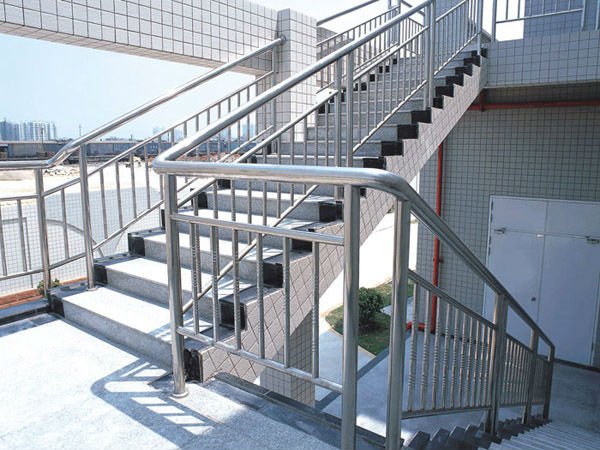
3. Applications
Milk and food industry, pharmaceutical industry, industries with special internal surface requirements.
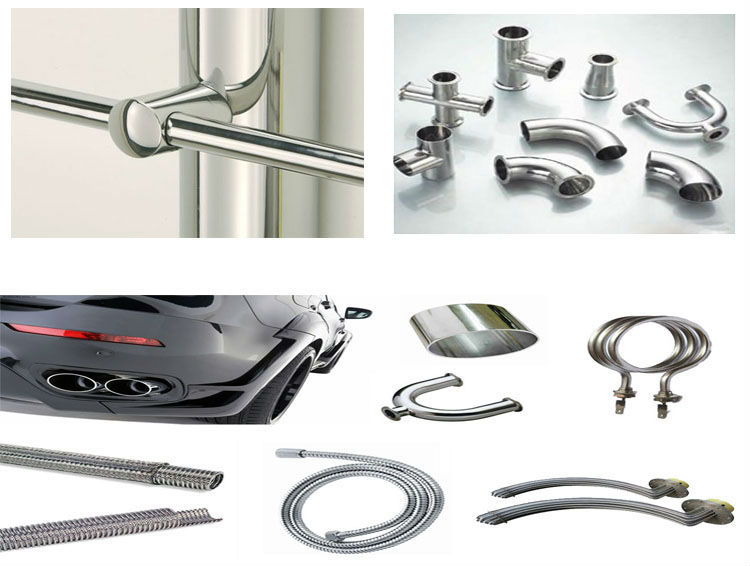
4. Stainless steel conservation
Stainless steel is a popular metal for appliances these days. Many kitchen appliances, both large and small, are made with stainless steel. Pots and pans and eating utensils are also made with stainless steel. One advantage of stainless steel is that is very resistant to rusting. But it can get rust stains from transference of rusty objects. You can keep stainless steel rust-free by following a few simple steps.
Clean frequently with a cleaner and water. Any cleaner that is safe for glass is usually safe for stainless steel.
Scrub off all rust from these objects with a scrubbing pad or steel wood pad. This means getting rid of rust from pots and pans before putting them into a stainless steel sink or on top of a stainless steel stove.
Put a rubber mat at the bottom of the stainless steel sink before placing rusted pots and pans (such as cast iron cookware) in the sink.
Apply a thin layer of lubricant (such as mineral oil) to the surface of the stainless steel. This prevents rust from forming.
Inspect equipment frequently, if you notice discoloration, tarnish or water stains, increase the frequency of your fresh water rinses to reduce accumulated chemicals
- Q: Can stainless steel pipes be used for structural purposes?
- Yes, stainless steel pipes can be used for structural purposes. Stainless steel is known for its strength and durability, making it suitable for various structural applications such as construction, infrastructure, and industrial projects. Its corrosion resistance properties also make it a preferred choice for environments that are exposed to moisture or chemicals.
- Q: Can stainless steel pipes be used in the water treatment industry?
- Yes, stainless steel pipes can be used in the water treatment industry. Stainless steel is known for its corrosion resistance and durability, making it an ideal choice for transporting and storing water in various treatment processes. Additionally, stainless steel pipes are hygienic, easy to clean, and can withstand high temperatures and pressures, making them suitable for a wide range of water treatment applications.
- Q: How do you calculate the flow velocity in stainless steel pipes?
- In order to determine the flow velocity in stainless steel pipes, one must take into account multiple factors. Firstly, it is necessary to be acquainted with the flow rate or volumetric flow rate (Q) of the fluid that passes through the pipe. This can be ascertained by measuring the volume of fluid that traverses the pipe within a given time period. Subsequently, the cross-sectional area (A) of the pipe needs to be determined. For circular pipes, this can be computed using the formula A = πr², where r denotes the radius of the pipe. Once both the flow rate (Q) and cross-sectional area (A) are known, the flow velocity (V) can be calculated using the formula V = Q / A. It is worth noting that the flow velocity may undergo variations along the length of the pipe due to factors such as friction and changes in pipe diameter. In such instances, more advanced calculations or simulations may be required to accurately ascertain the flow velocity at specific points within the pipe. Furthermore, it is crucial to take into consideration the properties of the fluid being transported, such as viscosity and density, as they can also impact the flow velocity.
- Q: Are stainless steel pipes suitable for architectural applications?
- Yes, stainless steel pipes are highly suitable for architectural applications. They offer excellent durability, corrosion resistance, and aesthetic appeal, making them an ideal choice for various architectural structures such as handrails, facades, and interior designs. Additionally, stainless steel pipes can withstand harsh weather conditions, maintain their appearance over time, and require minimal maintenance, further enhancing their suitability for architectural use.
- Q: Are stainless steel pipes suitable for hydraulic applications?
- Yes, stainless steel pipes are suitable for hydraulic applications. They offer excellent corrosion resistance and durability, making them ideal for use in hydraulic systems where fluid flow and pressure are involved. Additionally, stainless steel pipes can handle high temperatures and are resistant to cracking, making them a reliable choice for hydraulic applications.
- Q: Are stainless steel pipes suitable for drinking water applications?
- Yes, stainless steel pipes are suitable for drinking water applications. Stainless steel is a highly durable and corrosion-resistant material, making it an excellent choice for transporting drinking water. It does not leach harmful substances into the water and is resistant to rust and scaling, ensuring the water remains clean and safe for consumption. Additionally, stainless steel pipes are easy to clean and maintain, which further promotes the hygiene of the water supply. The long lifespan and reliability of stainless steel pipes also make them a cost-effective solution for drinking water applications.
- Q: Can stainless steel pipes be insulated with polycarbonate?
- No, stainless steel pipes cannot be insulated with polycarbonate. Polycarbonate is a thermoplastic material that is not suitable for insulation purposes. Insulation of stainless steel pipes typically requires materials such as fiberglass, foam, or mineral wool.
- Q: What is the difference between schedule 10 and schedule 160 stainless steel pipes?
- The main difference between schedule 10 and schedule 160 stainless steel pipes is their thickness and pressure rating. Schedule 10 pipes have a thinner wall thickness and a lower pressure rating compared to schedule 160 pipes, which have a thicker wall thickness and a higher pressure rating. Additionally, schedule 160 pipes are typically used for high-pressure applications, while schedule 10 pipes are suitable for low to medium-pressure applications.
- Q: Difference between stainless steel and steel pipe
- Stainless steel (Stainless Steel) is referred to as the stainless steel, the resistance of air, steam, water and other weak corrosive medium or with stainless steel known as stainless steel; while the resistance to chemical corrosion (acid, alkali and salt chemical etching) corrosion of steel called acid resistant steel. Because of the difference in the chemical composition of the two, and make their corrosion resistance is different, ordinary stainless steel is generally not resistant to chemical medium corrosion, and acid resistant steel are generally stainless steel.
- Q: How do you prevent discoloration in stainless steel pipes?
- To prevent discoloration in stainless steel pipes, it is essential to maintain proper cleaning and maintenance. Regularly clean the pipes using mild soapy water or a stainless steel cleaner, and avoid using abrasive or harsh chemicals that may cause damage or discoloration. Additionally, ensure proper ventilation to minimize the exposure to high temperatures or humidity, which can lead to discoloration.
Send your message to us
TIG Welded 304 Stainless Steel Rectangular Tube/Pipe
- Loading Port:
- Shanghai
- Payment Terms:
- TT OR LC
- Min Order Qty:
- 5 m.t.
- Supply Capability:
- 25000 m.t./month
OKorder Service Pledge
OKorder Financial Service
Similar products
Hot products
Hot Searches
Related keywords
